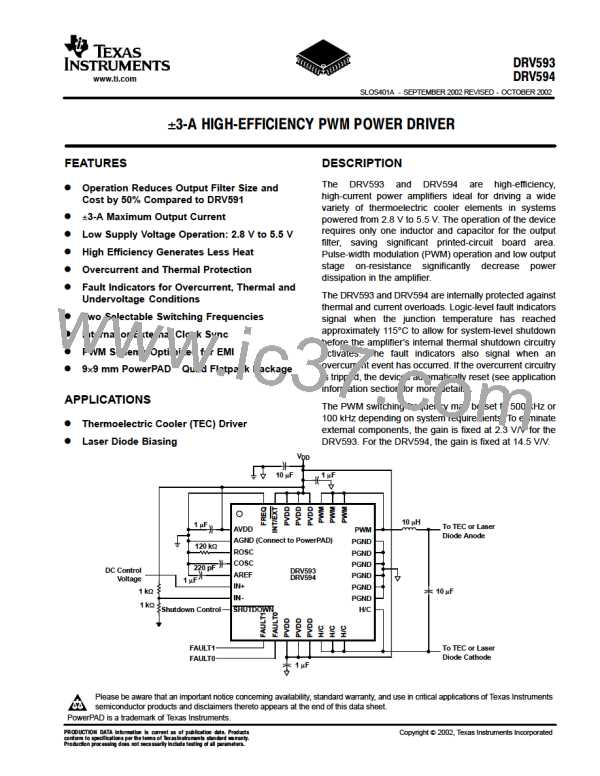DRV593
DRV594
www.ti.com
SLOS401A - SEPTEMBER 2002 REVISED - OCTOBER 2002
HEAT/COOL TRANSITION
As the device transitions from cooling to heating, the duty cycle of the PWM outputs decrease to a small value and
the H/C outputs remains at ground. When the device transitions to heating mode, the H/C outputs change from zero
volts to VDD and the PWM outputs change to a high duty cycle. The direction of the current flow is reversed, but a
low voltage is maintained across the load. The duty cycle decreases as the part is put further into heating mode to
drive more current through the load. Figure 20 illustrates the transition from cooling to heating.
ZERO-CROSSING REGION
When the differential output voltage is near zero, the control logic in the DRV593 and DRV594 causes the outputs
to change between heating and cooling modes. There are two possible states for the PWM and H/C outputs to obtain
zero volts differentially: both outputs can be at VDD or both outputs can be at ground. Therefore, random noise causes
the outputs to change between the two states when the two input voltages are equal. The outputs switch from zero
to VDD, although not at a fixed frequency rate. Some of the pulses may be wider than others, but the two outputs
(PWM and H/C) track each other to provide zero differential voltage. These uneven pulse widths can increase the
switching noise during the zero-crossing condition.
To avoid this phenomenon, hysteresis should be implemented in the control loop to prevent the device from operating
within this region. Although planning for operation during the zero-crossing is important, the normal operating points
for the DRV593 and DRV594 are outside of this region. For laser temperature/wavelength regulation, the zero volts
output condition is only a concern when the laser temperature or wavelength, relative to the ambient temperature,
requires no heating or cooling from the TEC element.
VDD
IN +
IN -
0
VDD
PWM
0
VDD
H/C
0
Figure 20. Transition From Cooling to Heating
13

 TI [ TEXAS INSTRUMENTS ]
TI [ TEXAS INSTRUMENTS ]